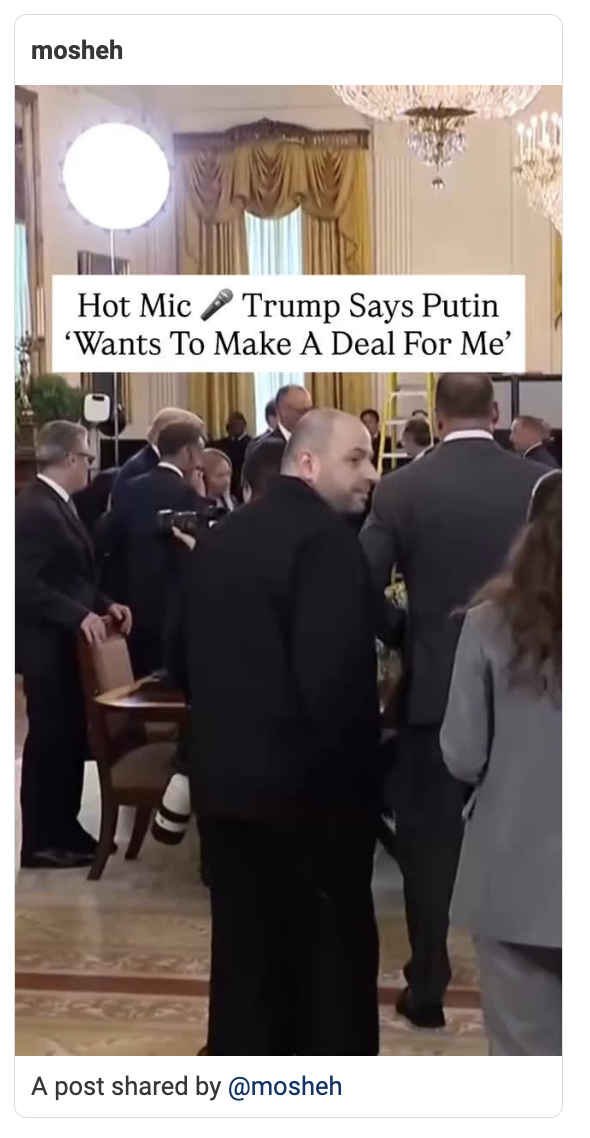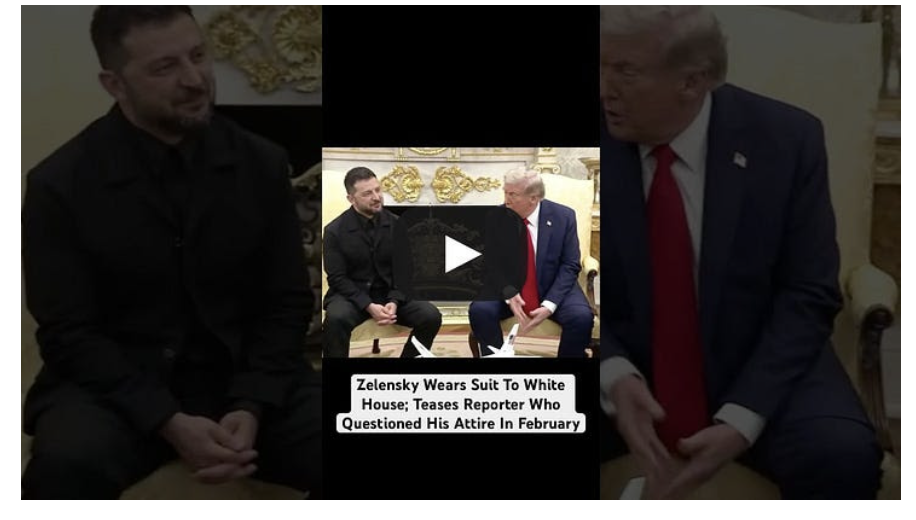European, NATO Leaders Praise Breakthrough In Potential End To Ukraine-Russia War
President Trump, hosting Ukrainian President Volodymyr Zelensky at the White House on Monday, opened the door to deploying U.S. troops as part of security guarantees for Ukraine to enforce a peace deal with Russia.
That's a major shift from Trump's past rhetoric around U.S. involvement. The goal would be to create a force to protect Ukraine from future invasions. It comes as Russia has consistently opposed Ukraine joining NATO.
During the high-stakes talks on the future of the war, which included European leaders, Trump reportedly paused the meeting to call Russian President Vladimir Putin, who he’d met with days earlier, signaling potential movement on a deal.
Earlier in the day, Finnish President Alexander Stubb said he believes “the past two weeks, we've probably had more progress in ending this war than we have in the past 3.5 years”, when Russia launched its full-scale invasion in Ukraine. NATO Secretary General Mark Rutte commended Trump for jumpstarting the dialogue.
Meanwhile, Trump was overheard telling French President Emmanuel Macron that he thinks Russian President Vladimir Putin “wants to make a deal for me. As crazy as it sounds.” Trump met with Putin on Friday in Alaska to discuss a potential path to peace, which ended without a ceasefire deal and a canceled luncheon.
BEST BEHAVIOR
The meetings at the White House today were notably cordial — with European leaders praising Trump’s efforts and Trump himself striking a much softer tone toward Zelensky than we saw back in late February.
Part of that may be the optics: Trump faced backlash for appearing too warm toward Putin on Friday (even from the conservative-leaning WSJ editorial board). Zelensky also changed his tune, showing up in a more formal black field jacket, black shirt, and black slacks — instead of his usual military-style attire.
Back in February, Zelensky’s outfit became a flashpoint in a tense conversation that ultimately led to him being kicked out of the White House.
MOVEMENT TOWARD A DEAL
France’s Macron backed the push for a trilateral meeting with Zelensky, Trump, and Putin — and eventually a quadrilateral one that includes Europe, which he stressed is most at risk of further Russian aggression. But first, he emphasized the importance of a ceasefire. Trump, however, urged a more comprehensive peace deal.
Security guarantees: Witkoff compared the security guarantees Russia agreed to as being similar to those in NATO’s Article 5, where an attack on one NATO member triggers a collective response. Such a deal could address Ukraine’s security fears without ensuring NATO membership, which Putin opposes. No details were given on how the security guarantee would be structured.
That type of guarantee could mirror military arrangements the U.S. maintains with non-NATO countries like South Korea, Japan, and Israel.
Witkoff also said Putin agreed to passing a measure through his parliament (which he controls) that Russia would not push into other Ukrainian or European territory as part of the deal.
Zelensky on Monday said Ukraine needs “everything” in terms of security guarantees — weapons, intelligence, training, and strong commitments from the U.S. and its allies.
WHAT’S NEXT
Trump expressed hope for a trilateral meeting between the three leaders, potentially within weeks. Securities guarantees and territorial claims will be two of the toughest areas to negotiate if there is such a meeting.



